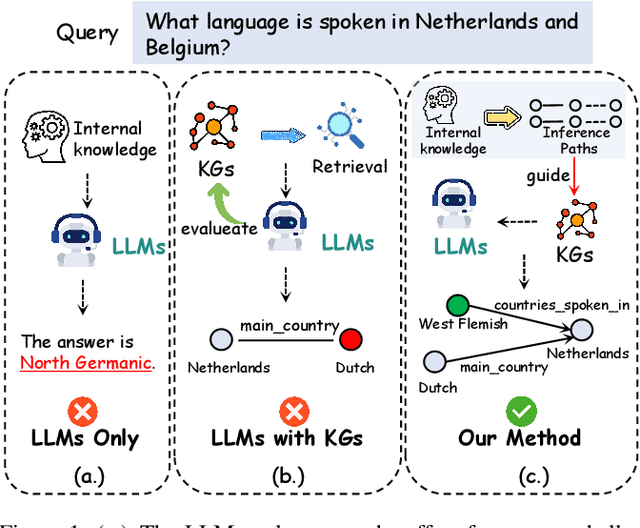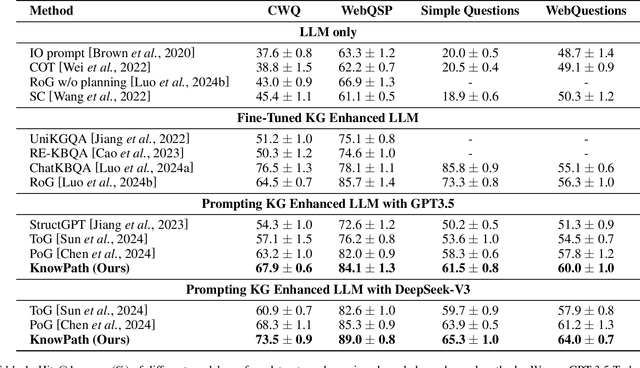Hongyu Yang
Hybrid-Domain Adaptative Representation Learning for Gaze Estimation
Nov 17, 2025Abstract:Appearance-based gaze estimation, aiming to predict accurate 3D gaze direction from a single facial image, has made promising progress in recent years. However, most methods suffer significant performance degradation in cross-domain evaluation due to interference from gaze-irrelevant factors, such as expressions, wearables, and image quality. To alleviate this problem, we present a novel Hybrid-domain Adaptative Representation Learning (shorted by HARL) framework that exploits multi-source hybrid datasets to learn robust gaze representation. More specifically, we propose to disentangle gaze-relevant representation from low-quality facial images by aligning features extracted from high-quality near-eye images in an unsupervised domain-adaptation manner, which hardly requires any computational or inference costs. Additionally, we analyze the effect of head-pose and design a simple yet efficient sparse graph fusion module to explore the geometric constraint between gaze direction and head-pose, leading to a dense and robust gaze representation. Extensive experiments on EyeDiap, MPIIFaceGaze, and Gaze360 datasets demonstrate that our approach achieves state-of-the-art accuracy of $\textbf{5.02}^{\circ}$ and $\textbf{3.36}^{\circ}$, and $\textbf{9.26}^{\circ}$ respectively, and present competitive performances through cross-dataset evaluation. The code is available at https://github.com/da60266/HARL.
Micro-macro Gaussian Splatting with Enhanced Scalability for Unconstrained Scene Reconstruction
Jun 16, 2025Abstract:Reconstructing 3D scenes from unconstrained image collections poses significant challenges due to variations in appearance. In this paper, we propose Scalable Micro-macro Wavelet-based Gaussian Splatting (SMW-GS), a novel method that enhances 3D reconstruction across diverse scales by decomposing scene representations into global, refined, and intrinsic components. SMW-GS incorporates the following innovations: Micro-macro Projection, which enables Gaussian points to sample multi-scale details with improved diversity; and Wavelet-based Sampling, which refines feature representations using frequency-domain information to better capture complex scene appearances. To achieve scalability, we further propose a large-scale scene promotion strategy, which optimally assigns camera views to scene partitions by maximizing their contributions to Gaussian points, achieving consistent and high-quality reconstructions even in expansive environments. Extensive experiments demonstrate that SMW-GS significantly outperforms existing methods in both reconstruction quality and scalability, particularly excelling in large-scale urban environments with challenging illumination variations. Project is available at https://github.com/Kidleyh/SMW-GS.
DDAE++: Enhancing Diffusion Models Towards Unified Generative and Discriminative Learning
May 16, 2025Abstract:While diffusion models have gained prominence in image synthesis, their generative pre-training has been shown to yield discriminative representations, paving the way towards unified visual generation and understanding. However, two key questions remain: 1) Can these representations be leveraged to improve the training of diffusion models themselves, rather than solely benefiting downstream tasks? 2) Can the feature quality be enhanced to rival or even surpass modern self-supervised learners, without compromising generative capability? This work addresses these questions by introducing self-conditioning, a straightforward yet effective mechanism that internally leverages the rich semantics inherent in denoising network to guide its own decoding layers, forming a tighter bottleneck that condenses high-level semantics to improve generation. Results are compelling: our method boosts both generation FID and recognition accuracy with 1% computational overhead and generalizes across diverse diffusion architectures. Crucially, self-conditioning facilitates an effective integration of discriminative techniques, such as contrastive self-distillation, directly into diffusion models without sacrificing generation quality. Extensive experiments on pixel-space and latent-space datasets show that in linear evaluations, our enhanced diffusion models, particularly UViT and DiT, serve as strong representation learners, surpassing various self-supervised models.
Multi-Grained Compositional Visual Clue Learning for Image Intent Recognition
Apr 25, 2025Abstract:In an era where social media platforms abound, individuals frequently share images that offer insights into their intents and interests, impacting individual life quality and societal stability. Traditional computer vision tasks, such as object detection and semantic segmentation, focus on concrete visual representations, while intent recognition relies more on implicit visual clues. This poses challenges due to the wide variation and subjectivity of such clues, compounded by the problem of intra-class variety in conveying abstract concepts, e.g. "enjoy life". Existing methods seek to solve the problem by manually designing representative features or building prototypes for each class from global features. However, these methods still struggle to deal with the large visual diversity of each intent category. In this paper, we introduce a novel approach named Multi-grained Compositional visual Clue Learning (MCCL) to address these challenges for image intent recognition. Our method leverages the systematic compositionality of human cognition by breaking down intent recognition into visual clue composition and integrating multi-grained features. We adopt class-specific prototypes to alleviate data imbalance. We treat intent recognition as a multi-label classification problem, using a graph convolutional network to infuse prior knowledge through label embedding correlations. Demonstrated by a state-of-the-art performance on the Intentonomy and MDID datasets, our approach advances the accuracy of existing methods while also possessing good interpretability. Our work provides an attempt for future explorations in understanding complex and miscellaneous forms of human expression.
GaussianIP: Identity-Preserving Realistic 3D Human Generation via Human-Centric Diffusion Prior
Mar 14, 2025Abstract:Text-guided 3D human generation has advanced with the development of efficient 3D representations and 2D-lifting methods like Score Distillation Sampling (SDS). However, current methods suffer from prolonged training times and often produce results that lack fine facial and garment details. In this paper, we propose GaussianIP, an effective two-stage framework for generating identity-preserving realistic 3D humans from text and image prompts. Our core insight is to leverage human-centric knowledge to facilitate the generation process. In stage 1, we propose a novel Adaptive Human Distillation Sampling (AHDS) method to rapidly generate a 3D human that maintains high identity consistency with the image prompt and achieves a realistic appearance. Compared to traditional SDS methods, AHDS better aligns with the human-centric generation process, enhancing visual quality with notably fewer training steps. To further improve the visual quality of the face and clothes regions, we design a View-Consistent Refinement (VCR) strategy in stage 2. Specifically, it produces detail-enhanced results of the multi-view images from stage 1 iteratively, ensuring the 3D texture consistency across views via mutual attention and distance-guided attention fusion. Then a polished version of the 3D human can be achieved by directly perform reconstruction with the refined images. Extensive experiments demonstrate that GaussianIP outperforms existing methods in both visual quality and training efficiency, particularly in generating identity-preserving results. Our code is available at: https://github.com/silence-tang/GaussianIP.
KnowPath: Knowledge-enhanced Reasoning via LLM-generated Inference Paths over Knowledge Graphs
Feb 17, 2025



Abstract:Large language models (LLMs) have demonstrated remarkable capabilities in various complex tasks, yet they still suffer from hallucinations. Introducing external knowledge, such as knowledge graph, can enhance the LLMs' ability to provide factual answers. LLMs have the ability to interactively explore knowledge graphs. However, most approaches have been affected by insufficient internal knowledge excavation in LLMs, limited generation of trustworthy knowledge reasoning paths, and a vague integration between internal and external knowledge. Therefore, we propose KnowPath, a knowledge-enhanced large model framework driven by the collaboration of internal and external knowledge. It relies on the internal knowledge of the LLM to guide the exploration of interpretable directed subgraphs in external knowledge graphs, better integrating the two knowledge sources for more accurate reasoning. Extensive experiments on multiple real-world datasets confirm the superiority of KnowPath.
Micro-macro Wavelet-based Gaussian Splatting for 3D Reconstruction from Unconstrained Images
Jan 24, 2025Abstract:3D reconstruction from unconstrained image collections presents substantial challenges due to varying appearances and transient occlusions. In this paper, we introduce Micro-macro Wavelet-based Gaussian Splatting (MW-GS), a novel approach designed to enhance 3D reconstruction by disentangling scene representations into global, refined, and intrinsic components. The proposed method features two key innovations: Micro-macro Projection, which allows Gaussian points to capture details from feature maps across multiple scales with enhanced diversity; and Wavelet-based Sampling, which leverages frequency domain information to refine feature representations and significantly improve the modeling of scene appearances. Additionally, we incorporate a Hierarchical Residual Fusion Network to seamlessly integrate these features. Extensive experiments demonstrate that MW-GS delivers state-of-the-art rendering performance, surpassing existing methods.
Generating Editable Head Avatars with 3D Gaussian GANs
Dec 26, 2024



Abstract:Generating animatable and editable 3D head avatars is essential for various applications in computer vision and graphics. Traditional 3D-aware generative adversarial networks (GANs), often using implicit fields like Neural Radiance Fields (NeRF), achieve photorealistic and view-consistent 3D head synthesis. However, these methods face limitations in deformation flexibility and editability, hindering the creation of lifelike and easily modifiable 3D heads. We propose a novel approach that enhances the editability and animation control of 3D head avatars by incorporating 3D Gaussian Splatting (3DGS) as an explicit 3D representation. This method enables easier illumination control and improved editability. Central to our approach is the Editable Gaussian Head (EG-Head) model, which combines a 3D Morphable Model (3DMM) with texture maps, allowing precise expression control and flexible texture editing for accurate animation while preserving identity. To capture complex non-facial geometries like hair, we use an auxiliary set of 3DGS and tri-plane features. Extensive experiments demonstrate that our approach delivers high-quality 3D-aware synthesis with state-of-the-art controllability. Our code and models are available at https://github.com/liguohao96/EGG3D.
3D$^2$-Actor: Learning Pose-Conditioned 3D-Aware Denoiser for Realistic Gaussian Avatar Modeling
Dec 16, 2024



Abstract:Advancements in neural implicit representations and differentiable rendering have markedly improved the ability to learn animatable 3D avatars from sparse multi-view RGB videos. However, current methods that map observation space to canonical space often face challenges in capturing pose-dependent details and generalizing to novel poses. While diffusion models have demonstrated remarkable zero-shot capabilities in 2D image generation, their potential for creating animatable 3D avatars from 2D inputs remains underexplored. In this work, we introduce 3D$^2$-Actor, a novel approach featuring a pose-conditioned 3D-aware human modeling pipeline that integrates iterative 2D denoising and 3D rectifying steps. The 2D denoiser, guided by pose cues, generates detailed multi-view images that provide the rich feature set necessary for high-fidelity 3D reconstruction and pose rendering. Complementing this, our Gaussian-based 3D rectifier renders images with enhanced 3D consistency through a two-stage projection strategy and a novel local coordinate representation. Additionally, we propose an innovative sampling strategy to ensure smooth temporal continuity across frames in video synthesis. Our method effectively addresses the limitations of traditional numerical solutions in handling ill-posed mappings, producing realistic and animatable 3D human avatars. Experimental results demonstrate that 3D$^2$-Actor excels in high-fidelity avatar modeling and robustly generalizes to novel poses. Code is available at: https://github.com/silence-tang/GaussianActor.
AutoFPDesigner: Automated Flight Procedure Design Based on Multi-Agent Large Language Model
Oct 19, 2024Abstract:Current flight procedure design methods heavily rely on human-led design process, which is not only low auto-mation but also suffer from complex algorithm modelling and poor generalization. To address these challenges, this paper proposes an agent-driven flight procedure design method based on large language model, named Au-toFPDesigner, which utilizes multi-agent collaboration to complete procedure design. The method enables end-to-end automated design of performance-based navigation (PBN) procedures. In this process, the user input the design requirements in natural language, AutoFPDesigner models the flight procedure design by loading the design speci-fications and utilizing tool libraries complete the design. AutoFPDesigner allows users to oversee and seamlessly participate in the design process. Experimental results show that AutoFPDesigner ensures nearly 100% safety in the designed flight procedures and achieves 75% task completion rate, with good adaptability across different design tasks. AutoFPDesigner introduces a new paradigm for flight procedure design and represents a key step towards the automation of this process. Keywords: Flight Procedure Design; Large Language Model; Performance-Based Navigation (PBN); Multi Agent;
 Add to Chrome
Add to Chrome Add to Firefox
Add to Firefox Add to Edge
Add to Edge